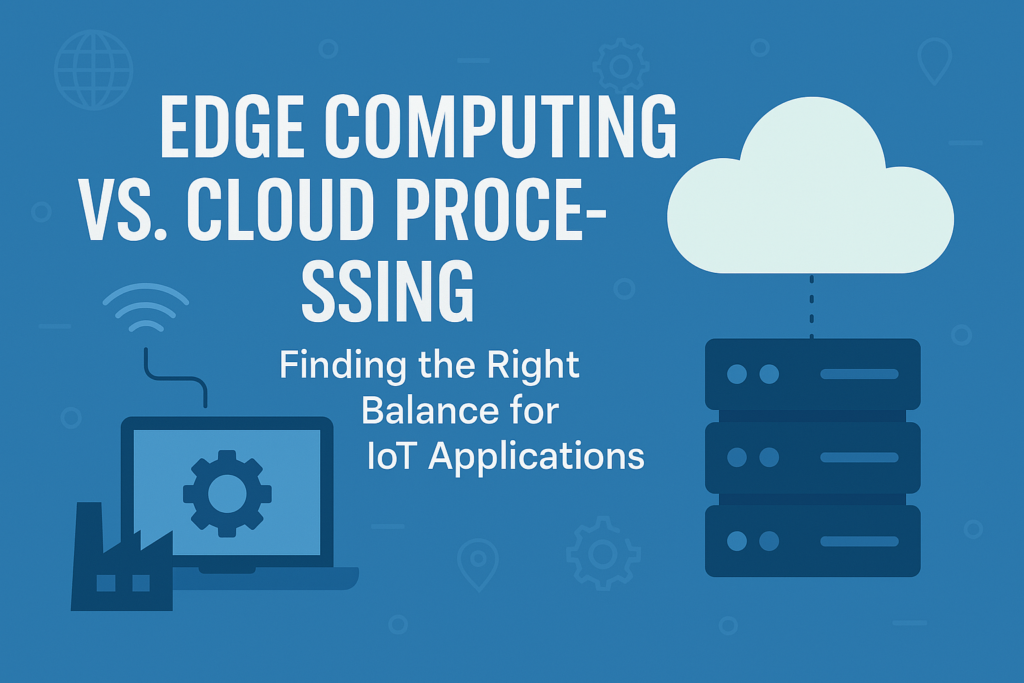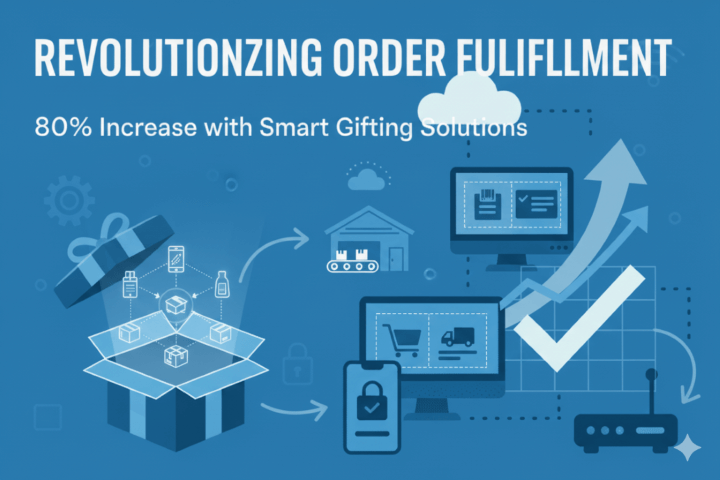As IoT deployments grow in scale and complexity, choosing the right processing architecture becomes critical. This in-depth analysis explores how to strategically balance edge and cloud computing for optimal IoT performance, cost-efficiency, and scalability.
The Processing Dilemma in Modern IoT
The Internet of Things presents a fundamental architectural challenge: where should data processing occur? With billions of connected devices generating massive volumes of data, sending everything to the cloud isn’t always feasible or desirable. Yet relying solely on edge processing introduces its own constraints.
At AdaptNXT, we’ve implemented hybrid edge-cloud architectures for clients across industrial, healthcare, and smart city environments. Our experience shows there’s no one-size-fits-all answer—instead, optimal solutions carefully balance edge and cloud capabilities based on specific use case requirements.
Understanding the Edge-Cloud Spectrum
Before diving into decision criteria, let’s establish clarity on where processing can occur in an IoT architecture:
Device Edge: Processing directly on the IoT device itself
Local Edge: Processing on a gateway device or local server near the IoT devices
Regional Edge: Processing at edge data centers or fog nodes within a geographic region
Cloud: Processing in centralized cloud environments
Each point along this spectrum offers different tradeoffs in latency, processing power, cost, and scalability.
Key Considerations for Edge vs. Cloud Decisions
1. Latency Requirements
When to prioritize edge processing:
- Safety-critical applications requiring sub-10ms response times
- Real-time control systems where milliseconds matter
- Applications where actions must continue during network outages
When cloud processing makes sense:
- Analytics that don’t require immediate action
- Complex processing that can tolerate seconds or minutes of latency
- Applications where consistent user experiences across locations outweigh speed
Real-world example: For an industrial client monitoring manufacturing equipment, we implemented edge processing for safety-critical anomaly detection that could trigger immediate shutdowns, while sending longer-term performance data to the cloud for predictive maintenance models.
2. Bandwidth and Connectivity Constraints
Factors favoring edge processing:
- Limited or expensive network bandwidth
- Intermittent connectivity
- High data generation rates with low information density
Scenarios better suited for cloud:
- Reliable, high-bandwidth connectivity
- Lower data volumes or pre-filtered data
- Applications requiring data from multiple distributed sources
Bandwidth calculation tip: For video analytics applications, streaming raw footage can require 2-10 Mbps per camera. Processing object detection at the edge and sending only metadata can reduce this to mere kilobytes per second—a reduction factor of 1000x or more.
3. Processing Power Requirements
Edge processing advantages:
- Sufficient for many monitoring and basic analytics tasks
- Increasingly capable with modern edge processors
- Can be optimized for specific, limited tasks
Cloud processing advantages:
- Virtually unlimited computing resources
- Support for complex machine learning models
- Ability to scale processing dynamically
Hybrid approach example: For a smart city traffic management system, we deployed lightweight computer vision models at the edge for basic vehicle counting and congestion detection, while periodically retraining these models in the cloud using accumulated data and more sophisticated algorithms.
4. Power Consumption Considerations
Edge considerations:
- Battery-powered devices require extremely efficient processing
- Local processing avoids energy costs of data transmission
- Edge hardware becoming increasingly power-efficient
Cloud advantages:
- Offloads processing power requirements from constrained devices
- Can leverage highly efficient data center operations
- Enables simpler, lower-power device hardware
Energy efficiency insight: In many IoT applications, wireless data transmission can consume 10-100x more energy than local computation. For battery-powered devices, this makes edge processing compelling even when the cloud offers superior computing capabilities.
5. Data Privacy and Security Requirements
Edge security benefits:
- Sensitive data can remain local, reducing exposure
- Reduced attack surface from fewer internet-transmitted data points
- Continued functionality during cloud outages or attacks
Cloud security strengths:
- Centralized security management and monitoring
- Regular security updates without field intervention
- Advanced threat detection capabilities
Regulatory consideration: For healthcare IoT applications, processing protected health information (PHI) at the edge can simplify HIPAA compliance by keeping sensitive data within the facility’s security perimeter.
6. Cost Structure Analysis
Edge cost factors:
- Higher initial hardware investment for capable edge devices
- Lower ongoing bandwidth costs
- Potentially higher maintenance costs for distributed systems
Cloud cost factors:
- Lower upfront device costs
- Ongoing subscription or usage-based expenses
- Potential for significant data transfer and storage costs
Cost analysis framework: When evaluating edge vs. cloud costs, calculate Total Cost of Ownership (TCO) across hardware, bandwidth, maintenance, and operational expenses for a 3-5 year horizon.
Decision Framework: Determining the Optimal Balance
Based on our implementation experience across diverse IoT projects, we’ve developed this decision framework to guide edge vs. cloud architecture choices:
- Identify time-sensitivity tiers for different functions:
- Critical (milliseconds): Must process at the edge
- Important (seconds): Consider local or regional edge
- Non-urgent (minutes/hours): Suitable for cloud processing
- Map data flows and analyze:
- Data volume generated
- Value density of raw data
- Transformation/filtering possibilities before transmission
- Assess operational context:
- Network reliability and bandwidth at deployment sites
- Power availability for edge devices
- Physical security of edge hardware
- Evaluate analytics complexity:
- Simple rule-based processing (edge-friendly)
- Mid-complexity statistical analysis (hybrid approaches)
- Complex machine learning models (typically cloud-based)
- Consider scaling requirements:
- Number of eventual deployment sites
- Frequency of software updates and improvements
- Need for centralized management
Case Study: Hybrid Architecture for Retail Analytics
A national retail chain approached [Your Company Name] to develop an in-store analytics solution that would track customer flow, optimize staffing, and enhance the shopping experience without compromising privacy.
The challenge:
- 2,000+ stores nationwide with varying connectivity quality
- Need for both real-time responsiveness and cross-store analytics
- Strong privacy requirements to protect customer identity
- Cost-effective deployment across a large physical footprint
Our hybrid solution:
Edge components:
- In-store sensors with embedded computer vision processing
- Anonymous people counting and heat mapping
- Real-time alerts for queue management
- Local data storage for 30-day history
Cloud components:
- Cross-location performance benchmarking
- Staff scheduling optimization algorithms
- Long-term trend analysis
- Centralized management dashboard
Key architectural decisions:
- Edge processing anonymized all video data, sending only numerical data to the cloud
- Each store maintained local processing capability for core functions
- Cloud connectivity enhanced functionality but wasn’t required for critical operations
- Intelligent data aggregation reduced bandwidth requirements by 97%
Results:
- 12% reduction in customer wait times
- 8% improvement in staff utilization efficiency
- 100% compliance with privacy requirements
- Solution deployed at 60% of the cost of a pure-cloud approach
Implementation Best Practices for Hybrid Architectures
Creating effective edge-cloud hybrid solutions requires careful planning:
- Design for domain-appropriate data partitioning
- Determine which data needs real-time processing vs. historical analysis
- Create clear schemas for data at rest and in transit
- Implement efficient data summarization and filtering at the edge
- Establish robust synchronization mechanisms
- Plan for reconnection and resynchronization after connectivity lapses
- Implement data versioning to resolve conflicts
- Design clear hierarchies for decision authority between edge and cloud
- Create consistent management interfaces
- Use unified monitoring across edge and cloud components
- Implement centralized policy management with local enforcement
- Design update mechanisms appropriate for each architectural layer
- Plan for evolving distribution of intelligence
- Start with core functionality at each layer
- Design for migration of capabilities between edge and cloud as needs evolve
- Create clear interfaces that allow implementation details to change
Emerging Technologies Reshaping the Edge-Cloud Balance
The optimal balance between edge and cloud is constantly evolving with technological advances:
5G and Advanced Connectivity
- Ultra-reliable low latency communication (URLLC) enables new cloud-based real-time applications
- Network slicing provides guaranteed quality of service for critical IoT traffic
- Multi-access edge computing (MEC) creates new options between traditional edge and cloud
AI Optimization for Constrained Devices
- Model compression techniques reducing AI footprint by 10-100x
- Specialized edge AI processors delivering dramatically improved performance per watt
- Federated learning enabling edge devices to contribute to model improvement without raw data sharing
Serverless and Containerization
- Lightweight container deployment to edge environments
- Function-as-a-Service at the edge reducing management complexity
- Consistent development environments across edge and cloud
Conclusion: Architecting for the Right Balance
The edge-cloud decision isn’t binary—it’s about finding the right processing distribution across a spectrum of options. By carefully analyzing application requirements through the lenses of latency, bandwidth, processing needs, power, security, and cost, IoT architects can create optimized solutions that leverage each layer’s strengths.
At AdaptNXT, our approach centers on workload-appropriate placement, where each processing task happens at the most suitable point in the architecture. This balanced strategy has consistently delivered IoT systems that are responsive, reliable, and cost-effective at scale.
Need help determining the right edge-cloud balance for your IoT initiative? Contact our IoT architecture team for a consultation to evaluate your specific requirements.







